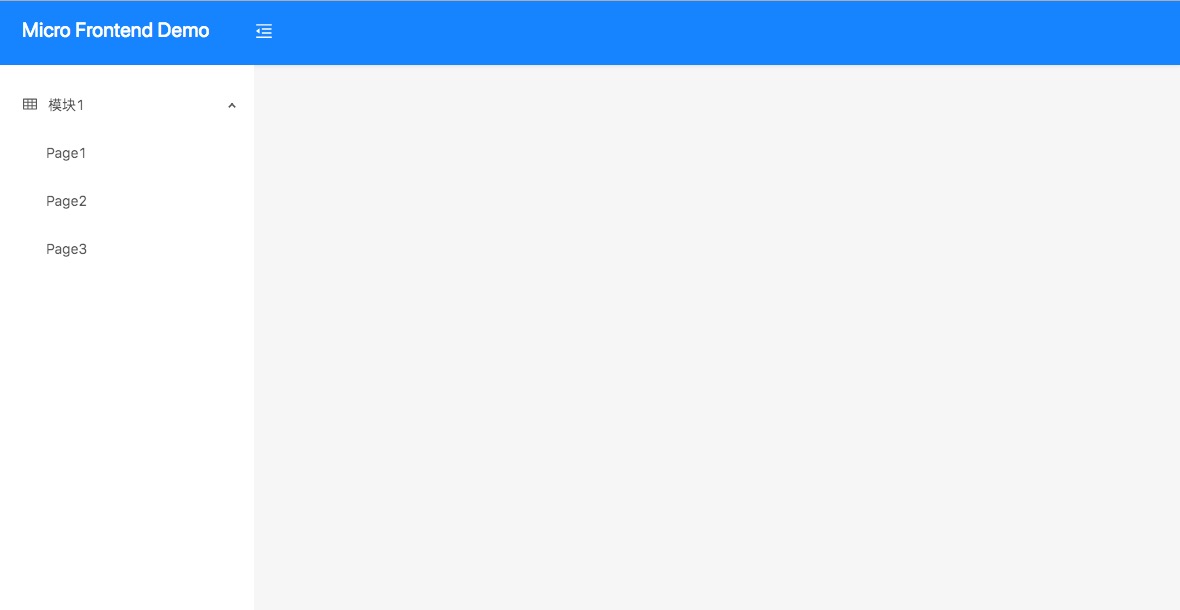前端微服务化解决方案7 - 静态数据共享
在前面的一些介绍,相信你对微前端已经有了一个相对完整的认知. 下面介绍一下,再开发过程中我的一些小技巧与处理方法.
动态入口
当有新的子模块会挂载到项目中的时候,在 UI 中肯定需要一个新的入口进入子模块的 UI. 而这样一个入口,是需要动态生成的.

例如:图中左边的菜单,不应该是代码写死的.而是根据每个模块提供的数据自动生成的.
不然每次发布新的模块,我们都需要在最外面的这个框架修改代码.这样就谈不上什么独立部署了.
静态数据共享
想要达到上面所的效果,我们可以这样做.
// ~/common/menu.js
import { isUrl } from '../utils/utils'
let menuData = [
{
name: '模块1',
icon: 'table',
path: 'module1',
rank: 1,
children: [
{
name: 'Page1',
path: 'page1',
},
{
name: 'Page2',
path: 'page2',
},
{
name: 'Page3',
path: 'page3',
},
],
}
]
let originParentPath = '/'
function formatter(data, parentPath = originParentPath, parentAuthority) {
...
}
// 在这里,我们对外导出 这个模块的菜单数据
export default menuData
// Store.js
import { createStore, combineReducers } from 'redux'
import menuDate from './common/menu'
import createHistory from 'history/createBrowserHistory'
const history = createHistory()
...
// 我们拿到数据之后,用一个reducer函数返回我们的菜单数据.
function menu() {
return menuDate
}
...
// 最终以Store.js对外导出我们的菜单数据,在注册的时候,每个应用都可以拿到这个数据了
export const storeInstance = createStore(combineReducers({ namespace: () => 'list', menu, render, to }))
当我们的 Base 模块,拿到所有子模块的菜单数据,把他们合并后,就可以渲染出正确的菜单了.
这只是一个小技巧,像这样的技巧足以帮助我们在代码中完成很多想不到的事情. 这里只是打开一个思路,后续还有更多的微前端小技巧相关的文章. 未完待续 …